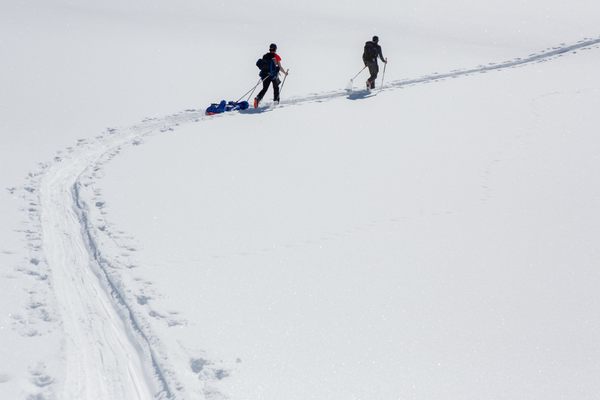Where Chicago Hides Its Snow
The city has over 500 lots to store any extra accumulation.
(Map of snow removal: red pins mark disposal locations)
Whenever a city gets hit by a serious blizzard, the snow has to go somewhere, quickly. Perhaps no city knows this better than Chicago: after the city’s 1967 storm, the streets weren’t clear for weeks, and rail yards famously started filling train cars with snow and shipping it out of town, as far south as Florida.
Back then, the city also had another simple strategy for disposing of snow: it would dump giant loads in the Chicago River. Since the 1960s, though, it’s become clear that snow cleared from the street can pick up pollutants and trash, and dumping it into waterways is an environmental hazard. Instead, cities have had to come up with new strategies for dealing with excess snow–which often means stockpiling it, in designated locations, until spring, or at least the next big thaw.
Some cities keep their snow locations secret, but Chicago shared its list of lots identified as excess snow disposal locations with Atlas Obscura and DNAInfo. Altogether, the city has 530 locations where it can pile snow, across the city’s 50 wards.
“We try to spread it out evenly around the city,” Cole Stallard, Deputy Commissioner of Streets and Sanitation, who oversee snow operations. “We’re not trying to take snow from one ward and shuttle it over it the other wards.”
These are vacant lots, identified by ward superintendents and re-verified each year, that both belong to the city and are located far away enough from businesses and residences that melting snow will not create a problem. The concentration of these locations is spottier on the city’s North Side, and denser on the West and South sides. The list can change year to year, as lots or the land around them are developed.
In contrast, New York has 48 sites for snow disposal, including 28 staging areas for snow melters that can rapidly deal with giant snow piles.
In the past, Chicago has rented melters to deal with snow: during a 2011 blizzard, when more than 21 inches of snow fell, the city used six melters to handle the load. More often, though, the city’s Department of Streets and Sanitation moves excess snow to vacant lots and lets it melt on its own, a more cost-effective measure.
With more than 500 lots available, it’s possible to spread out a lot of snow. After a 2015 blizzard, the fifth largest on record, during which more than 19 inches of snow fell, the city did not need to rent melters, according to Stallard.
The department does try to keep the piles of snow in any particular place “reasonable,” he says: “We don’t want to see people climbing up the mountain and sledding on it.”
This map is a collaborative effort between Atlas Obscura and DNAinfo Chicago. Click here to read DNAInfo’s version.














Follow us on Twitter to get the latest on the world's hidden wonders.
Like us on Facebook to get the latest on the world's hidden wonders.
Follow us on Twitter Like us on Facebook